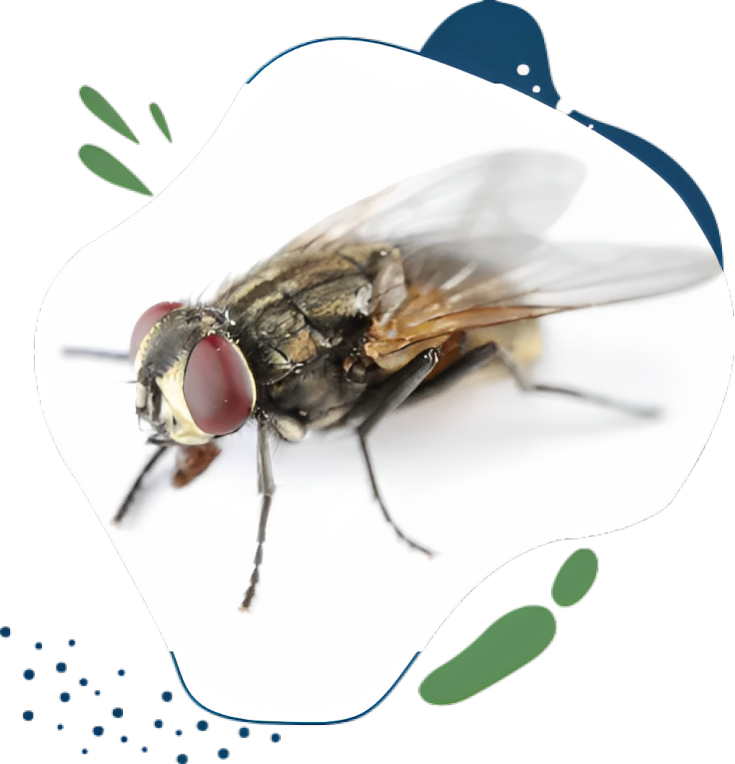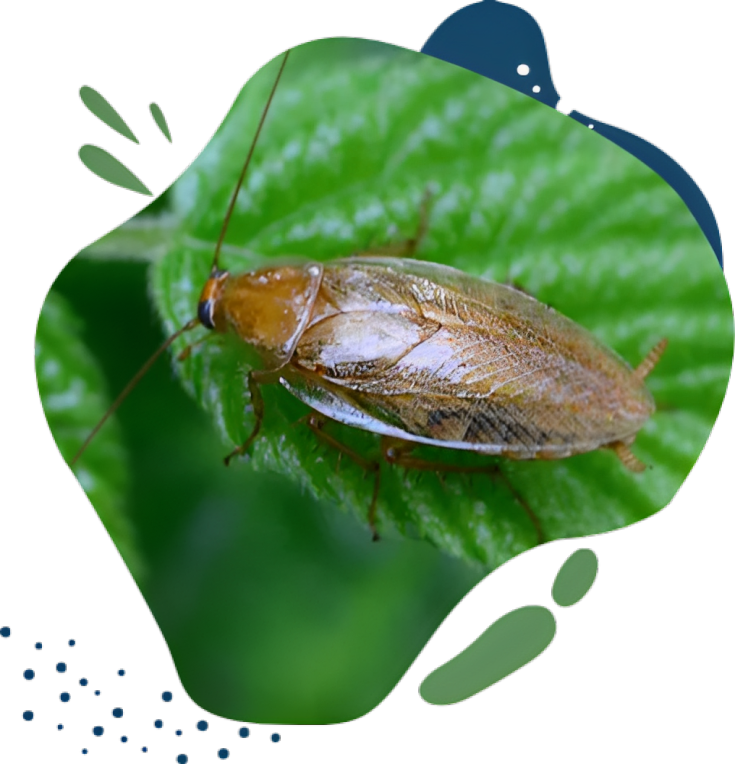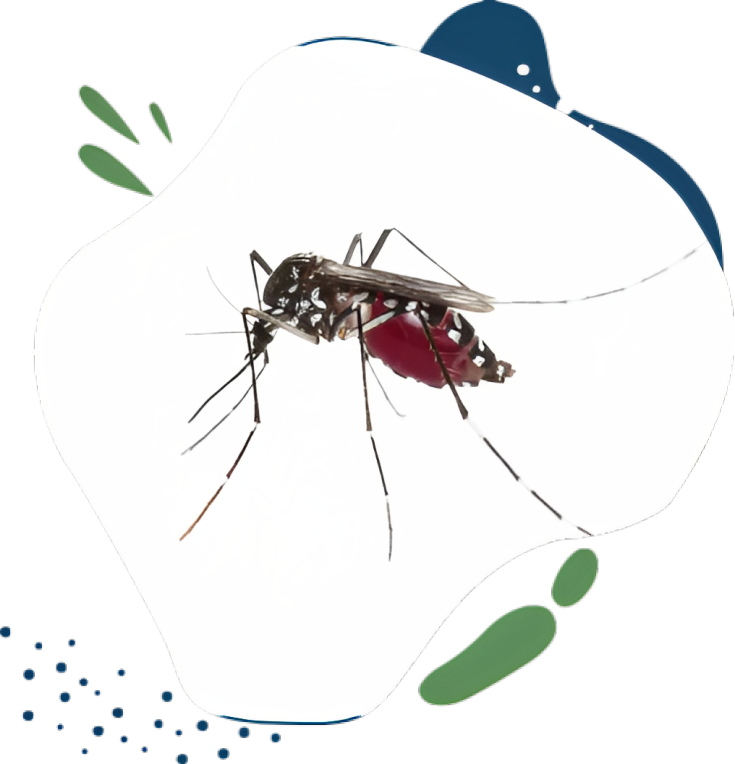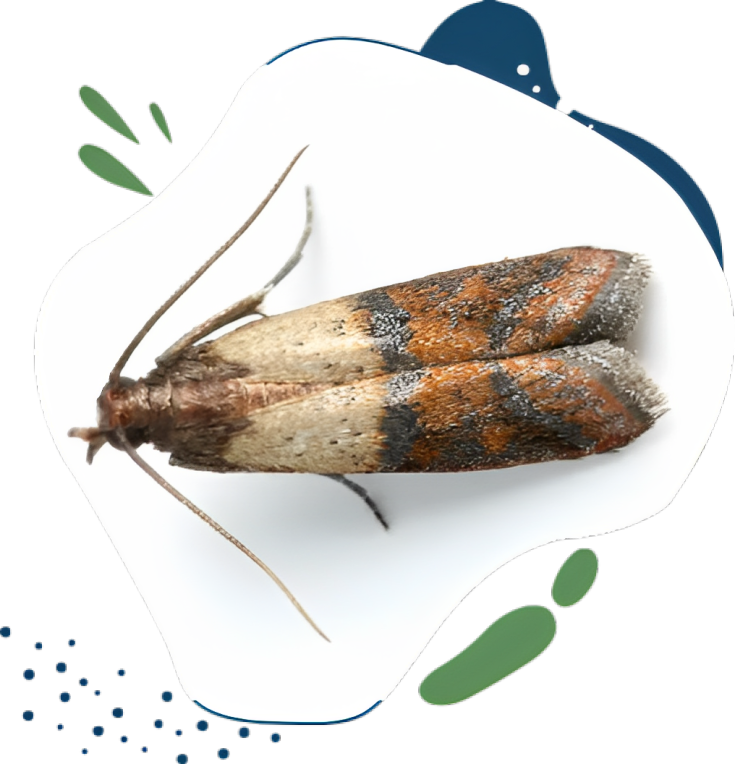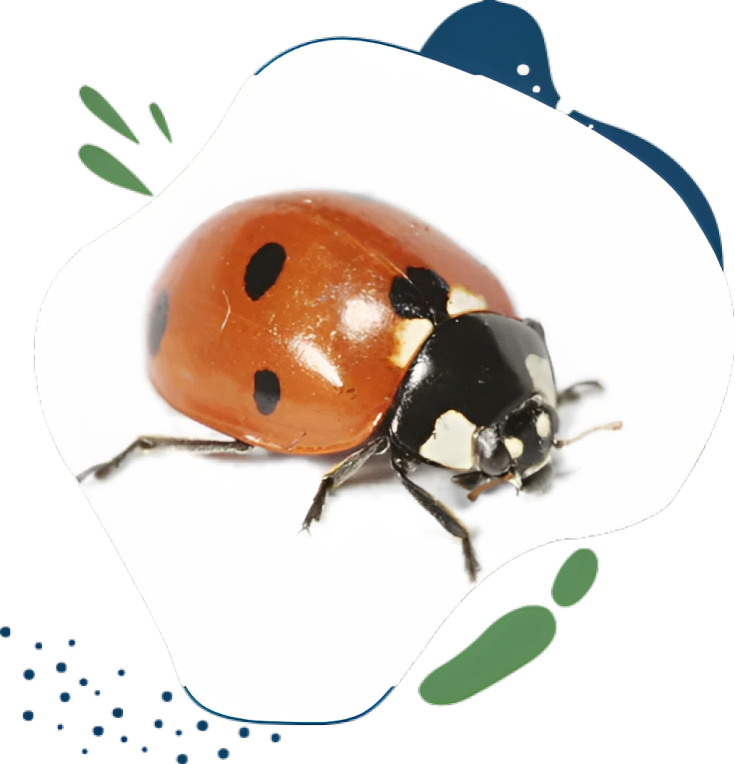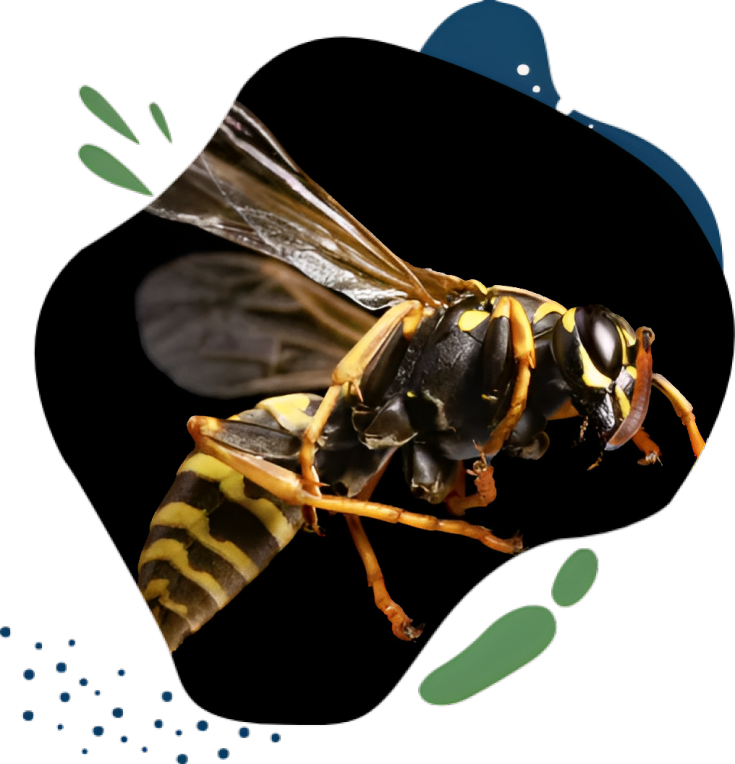Flying Bugs
Flies
House Flies
(Musca domestica)
Recognition: Adults ranging from 1/8" to 1/4" in length. They are primarily gray in color with four black stripes running along the body.
Habits: Females will lay eggs in moist materials which will then hatch within 24 hours. The larvae will then go through multiple instars over the next week before pupating and emerging as an adult. Adult flies generally do not live longer than a month.
Control:
The first step to fly control is locating the breeding sites. Once located, sanitation efforts should be made to the effected areas. This pest commonly breeds in garbage. If sanitation efforts are made, pesticides usage will be at a minimum. Treatments can be made to breeding sites and landing areas for the pest. Trash cans and covers can be treated. Fly baits can also be used where exterior control is difficult.
Cockroaches
German Cockroach
(Blattella germanica)
Recognition: Adults about 5/8" in length. Light brown in color with two darker stripes on pronotum.
Bio: Females will produce 30 eggs on average per hatching. Developmental time varies depending on temperature and humidity but on average from egg to adult is 100 days.
Control:
Obtaining cockroach control is a procedure that must be followed in order yield results. Cockroaches will usually be introduced into an environment by being carried in on cargo or delivery items. Once introduced into a property, they seek unsanitary conditions to feed on and harbor in. Ensuring clean and uncluttered conditions will not allow cockroaches to thrive, thus allowing for control efforts by Abair Lavery to be successful. Baiting methods is the primary route of control. Sprays and dusts can also be applied in situations that require them.
Occasional Invaders
Indian Meal Moths
(Plodia Interpunctella)
Recognition: Adults have a wingspread averaging 3/4". Upper win a pale color with the lower half a reddish brown. The Larval stage is roughly ½" in length and uniformly an off white color with the exception of the head which is brownish in color.
Habits: Females may lay as many as 400 eggs over the course of two weeks. Eggs will be laid upon a food material and as the larval stage emerges it will feed until it has consumed an adequate amount to pupate and become an adult moth. The larval stage can often be seen wandering on kitchen ceilings.
Control:
As with all pests, Abair Lavery will take the least hazardous approach possible. As with all stored food pests, control will consists of locating the source and removing it. Good preventative measures include practicing good sanitation, proper storage and rotation of stock. Chemical measures are determined on site once the situation has been evaluated.
Ladybug
(Harmonia axyridis)
Recognition: Oval shaped and averaging a 1/4" in length. Color is mainly red with black spots but the color can vary. Orange, yellow or brown Lady Bugs are common.
Bio: Adults will overwinter in a protected environment that offers enough warmth to survive the winter. This often means your home. Adults will fly to a structure and immediately begin looking for cracks and crevices to enter. Once in, they can often become a nuisance in unwanted areas. Upon emerging in the spring the females will deposit their eggs on plant life.
Control:
As with all pests, Abair Lavery will take the least hazardous approach possible. Because lady bugs are considered beneficial and are of little health importance, direct control is not recommended. However, in the event of extreme infestations where the pest becomes overbearing, interior treatments can be applied to attempt to relieve the situation. Whenever possible, vacuuming is encouraged to decrease the number of bugs present. In the spring a thorough inspection should be done to determine possible entry points for the pest. Around window frames, cable entrances, fascia boards and doorways are common entrances. Any issues should be sealed as best as you can.
Stinging & Biting
Yellowjackets
(Vespula)
Recognition: Adults about 1/2" in length. Yellow and black in color
Habits: Queen Yellowjacket will chose either an aerial or ground nesting site to begin forming a colony that can reach upwards of 3,000 workers at its peak. Nesting sites above ground may be on houses, garages, sheds and vegetation. Underground nest will be constructed where possible but will be most common where easy access is obtained.
Control:
When nest sizes have reached moderate sizes, no attempt to control these pests should be made by the home owner. Attempts to close off entry points on ground nests will only agitate the workers and create a dangerous environment for unsuspecting individuals and pets. Nests should be treated by a licensed professional using appropriately labeled pesticides and with the aid of a bee suit.
Let Our Family,
Take Care of Your Family
Schedule service today to keep your peace of mind in tact.

